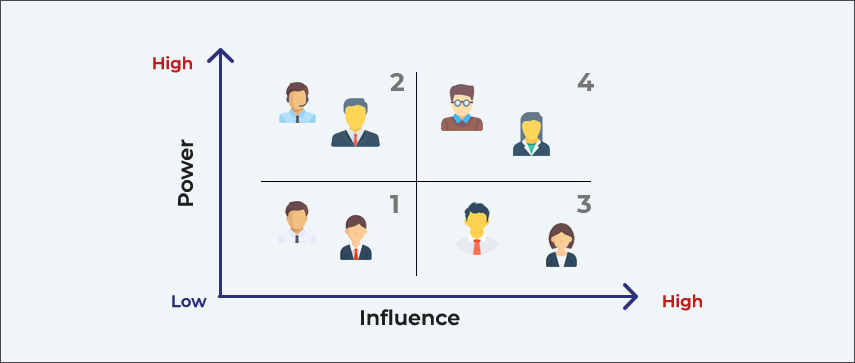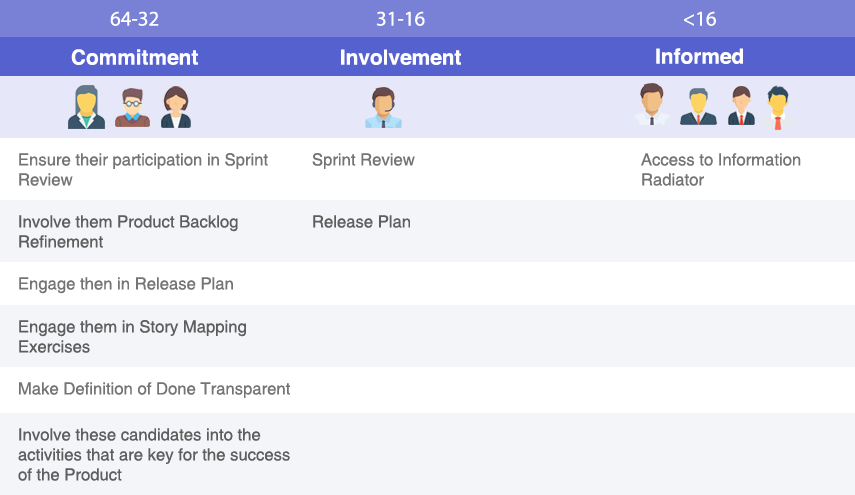
Sumeet Madan
With a remarkable 18-year tenure in software engineering, agile training, coaching, and consulting,... Read more
![]() Get Your AI-Enabled Scrum Master Certification for Just ₹1,500 (Save 85%)!
Get Your AI-Enabled Scrum Master Certification for Just ₹1,500 (Save 85%)!
Scrum.Org
SAFe®
ICAgile
Scrum Alliance
Technical Agility
Kanban
Business Analysis
Project Management
AI-Enabled
Agilemania Academy
Scrum.Org
SAFe®
ICAgile
Scrum Alliance
Technical Agility
Kanban
Business Analysis
Project Management
AI-Enabled

Sumeet Madan
With a remarkable 18-year tenure in software engineering, agile training, coaching, and consulting,... Read more

Stakeholder Management – Before one thinks of managing the stakeholders, it is very important to understand what is the meaning of Stakeholder. The dictionary meaning of Stakeholder is – “A person with an interest or concern in something, especially a business.” A few more definitions are: “A stakeholder is a party that has an interest in a company and can either affect or be affected by the business.”
“A stakeholder is either an individual, group, or organization who is impacted by the outcome of a project. They have an interest in the success of the project, and can be within or outside the organization that is sponsoring the project.” “A person, group or organization that has interest or concern in an organization. Stakeholders can affect or be affected by the organization's actions, objectives, and policies.”
Sometimes definition for a stakeholder comes as: “Anyone who is impacted directly or indirectly / positively or negatively from the outcome of a business/product or project” Can we conclude that if I am working on a product and due to delivery schedules I am ignoring my time, friends and family and they are getting impacted indirectly, so they are also the Stakeholders? In the context of Scrum, let’s see who all can be the Stakeholders.
Generally, we call :
Are these also the Stakeholders?
Join our Product Owner PSPO Training for top-notch instruction from Naveen and Sumeet. With a 100% success track record, your training success is assured.
Register Today!
Are we considering everyone above as the stakeholders? They are not the Stakeholders, but a type of stakeholders. You need to identify the actual stakeholders and that is, “A Person” from the above list. Most of the time people fail to identify an individual accountable stakeholder from the above area.
It’s like sometimes we tag management as a stakeholder, government as a stakeholder, third-party body as a stakeholder, and so on, but
So the first step of Stakeholder Management is to clearly Identify your stakeholders. Which is not a body, not a type, or not a department but an actual stakeholder as a PERSON The next step in Stakeholder Management is to Roadmap your stakeholder:
Identify the authority of the person
And map it to Power - Influence, Influence – Impact and Power - Impact
1. Power - influencer

2. Influencer - Impact

3. Power - Impact

Now, you have mapped your stakeholders on Power, Influence, and Impact. The next level of Stakeholder Management is Engaging your stakeholders Once you are done with the mapping let’s give a rank for each quadrant that will be consistent across the mappings

Plan Stakeholder Engagement If you multiply the highest number of each of the quadrants then the maximum rank is 4x4x4 = 64 and the lowest is 1x1x1 = 1 Take individuals from each mapping and quadrant and multiply the associated rank of the quadrant.
| 4×4×2 = 32 | 4×4×4 = 64 | 1×1×1 = 1 | 3×1×3 = 9 |
| 2×2×2 = 8 | 4×3×3 = 36 | 2×2×1 = 4 | 3×3×1 = 9 |
You can categorize these numbers into ranges now and then involve your stakeholders in different Product Activities and Events

Inspect Adapt and control your stakeholder engagement Note: The above article is just an attempt to initiate Stakeholder Management in your Product that the Product Owner should keep controlling. This is just my view and what I did during my role as Product Owner which really helped in managing my Stakeholders.
A lot of people must have their own experience in Stakeholder management that may be better than this and I appreciate that. This article is open for feedback though.
Unlock the keys to success as an Agile Coach with expert guidance. Learn essential skills, tools, and strategies to excel in this dynamic field and propel your career forward.
CONTACT US TODAY!
With a remarkable 18-year tenure in software engineering, agile training, coaching, and consulting, Sumeet's expertise is unparalleled. As a certified Professional Scrum Trainer (PST) from Scrum.org and a distinguished SAFe® Practice Consultant (SPC), Sumeet brings a wealth of knowledge and skill to every project, making a lasting impact on organizations seeking to embrace Agile methodologies.
WhatsApp Us
We will get back to you soon!
For a detailed enquiry, please write to us at connect@agilemania.com

